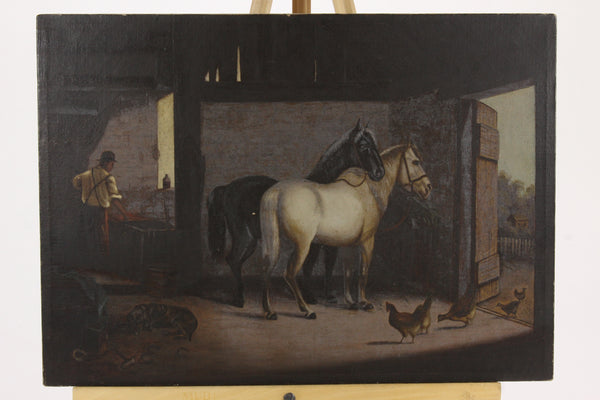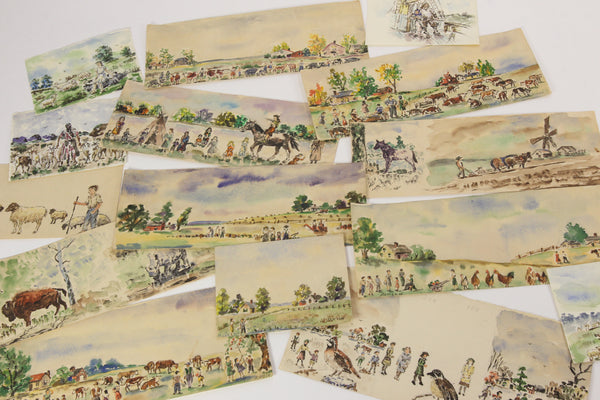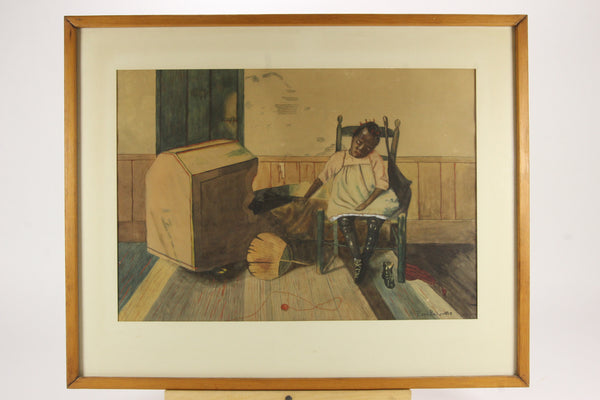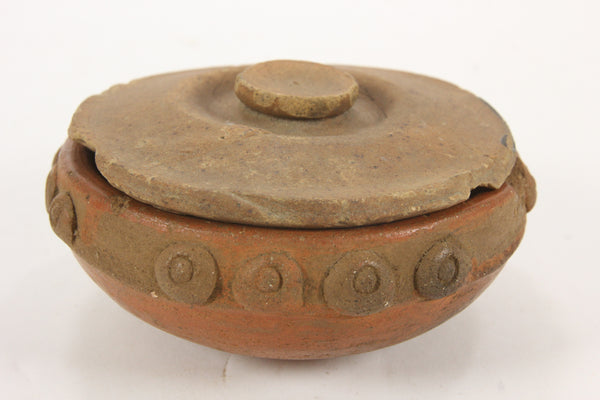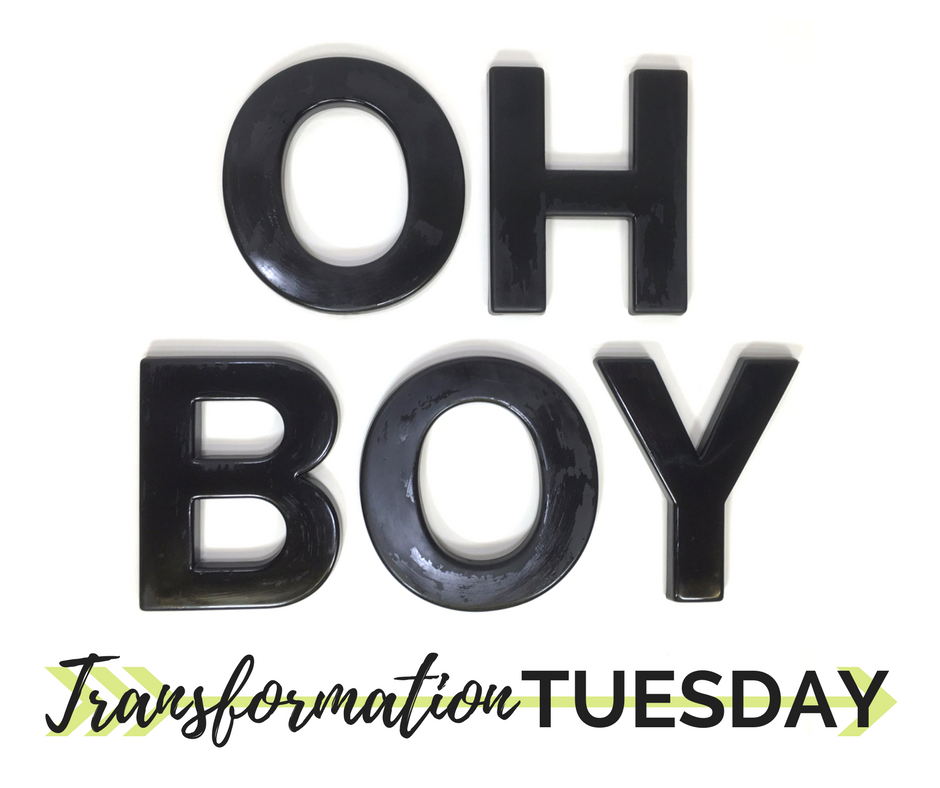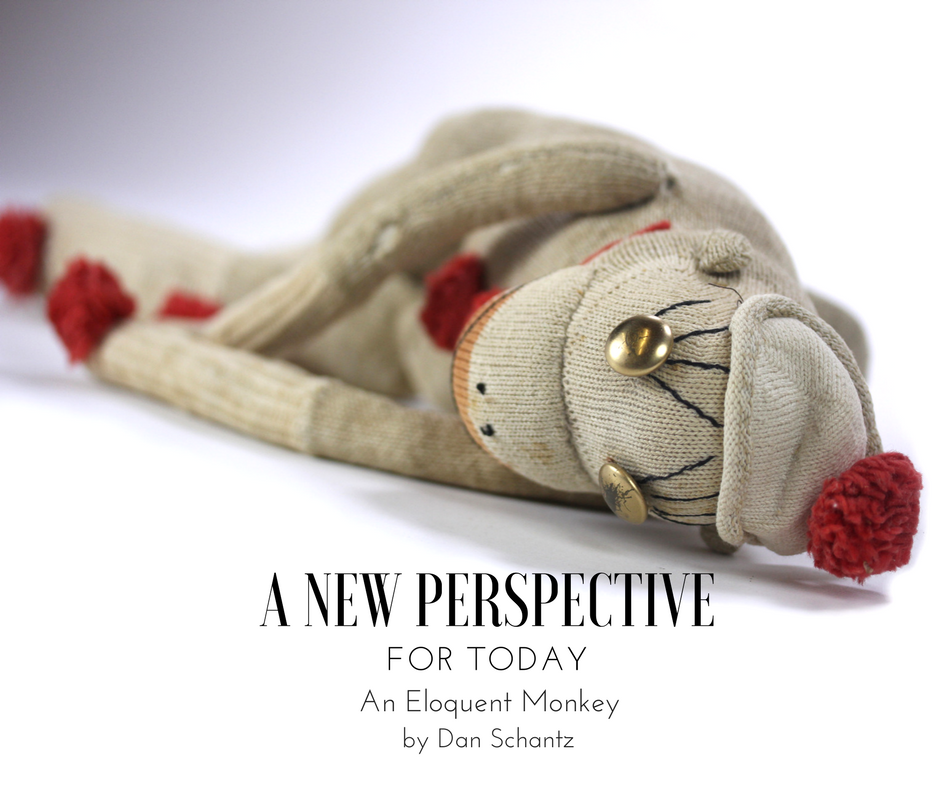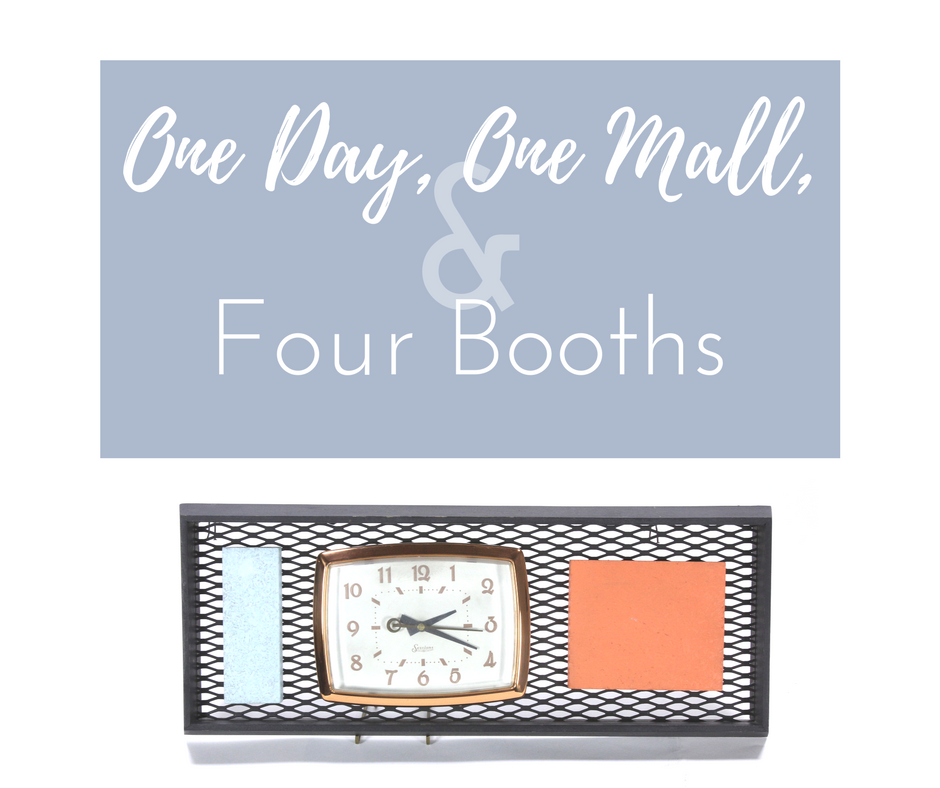RoofTop Antiques Meets Antiques Roadshow Part III

After receiving many threats upon my life (okay, it hasn’t quite come to that yet), I have decided that I should probably hurry and share more about our trip to Omaha for Antiques Roadshow! If you missed out on the trip precursor, you can still read it here. If you missed out on the early stages of our trip (and our first two appraisals) you may also read about those here.
While I was having our Perry Nature Prints and the JMW Turner Print evaluated, my parents were meeting with David Weiss, an expert in European Art and the Senior Vice President at Freeman’s Auction in Philadelphia, PA. He first looked at our blacksmith painting, one that I began adoring before it was even in our care. Mr. Weiss said that it was a nice, decorative oil on canvas. He believed it had been done in the style of well-known Dutch artist, Wouter Vershuur. Vershuur lived from 1812-1874, and was known for his paintings of equestrian scenes. It was Mr. Weiss’ opinion that our painting had been done by another artist who admired Vershuur and attempted to paint work similar to his. He felt that the blacksmith, horse heads and the chickens weren’t painted with the same quality of talent that Wouter Vershuur possessed.
Paid: $275 at the estate auction of a wealthy collector
Appraised Value: $300-500
I will note that, if it was a true Vershuur painting, this piece would be worth far more. I have seen his pieces sell from $1,500 to $30,000. Would that be nice?
David Weiss also took a look at our collection of Bimson watercolor paintings and our Flora Baker watercolor. He thought that they were “charming” but felt that they needed to be seen by someone who specialized in Folk Art. He sent my parents over to Ken Farmer, an expert in decorative arts, folk art, furniture and musical instruments. My mom was excited because Ken Farmer is one of her favorite appraisers on the show. He has a pleasant demeanor and a southern drawl that’s to die for. Mr. Farmer first looked at the Bimson watercolors. He thought they were interesting, but “not charming enough” to really be folk art. We thought this was funny since David Weiss had specifically called them “charming”.
*Insert silent snicker*.
Mr. Farmer looked through all of the Bimson paintings, and was of the opinion that someone receiving instruction in painting was practicing with these pieces. He said that it looked like the painter was attempting to become a better, and possibly more established, artist, but was unsuccessful. Farmer suggested that the paintings would increase in value if they were split up.
Paid: $200 at the estate auction of a wealthy collector
Appraised Value: $75 per painting for the larger barn scenes (we have 5) and $20-30 for the smaller pieces. Total value would be approximately $635.
Ken Farmer next took a look at the Flora Baker watercolor painting. This painting is a simple but lovely piece with a Black Americana theme. It is signed by artist Flora Baker and dated 1868. Mr. Farmer stated that this piece was definitely classified as folk art. He said that it was indeed very old and had a great subject matter. He suggested that we upgrade the painting to a more compatible frame with a smaller matte.
Paid: $300 at the estate auction of a wealthy collector
Appraised Value: Mr. Farmer first stated that with a new matte and frame, this piece would bring $800-1,200 at auction. He later said that it would bring $500-1,000. We are not quite sure if he forgot his previous valuation or if he simply changed his mind. I think we’ll stick with his first intuition.
My parents and I met up at this point and exchanged notes. Our next visit was to the Arms and Militaria division with our Civil War letters, an appraisal I will share in detail tomorrow.
Our last stop of the day was the Ancient Art category with our Costa Rican bowl. If you remember from my original post, this bowl had the following note inside:
This small bowl was given to Elizabeth at 7:00 am by a High School Costa Rican. He had attended an active meeting with his brother the night before. It inspired him because of his problem solving & creativity. Therefore, he wanted Elizabeth to have this tiny bowl which he had found digging in the mountains. It is over 1,000 years old.
We questioned whether or not this bowl was truly more than 1,000 years old and weren’t sure if it was worthy of the Roadshow.
We were first sent to Richard Cervantes, an appraiser of Asian arts, rugs and textiles. He took one look at the bowl and sent us down a table to Douglas Deihl, and expert in Tribal Arts. Mr. Deihl was in the middle of another appraisal, so we patiently waited for our turn. While we waited, I was able to listen while Ted Trotta, another Tribal Arts expert, appraised a beautiful, intricately-beaded vest. He was highly knowledgeable in the area of Native American artifacts, and it was amazing to hear him share that knowledge. He knew that the vest was from the Sioux tribe and described the technique with which they had created it. He was shocked when he turned the vest over and found additional decorative elements embroidered on the back. He said that he had never seen this kind of work done by a Native American before, and thought that it had been taught to the maker by a neighboring settler. He gave an appraisal value of $1,500. I wish that we had been able to speak personally with Mr. Trotta - he took such interest in each item and described them with the joy of a true collector.
While I enjoyed the appraisal by Mr Trotta, my dad was listening in on the assessment being done by Mr. Deihl. The woman in front of us had in her possession two small, brass artifacts with a great story. Unfortunately, Douglas Deihl had to tell her that her artifacts were, in fact, reproductions. Her response: “No, they’re not.” Yikes. She was obviously not please, and the two of them discussed it for quite a while. Had they been real, her artifacts would be worth $18,000-20,000. Her reproductions were valued at $100-200.
When it was our turn, Deihl looked over the bowl for a moment and read the small note hidden inside. He stated that it was definitely pre-Columbian, meaning that the 1,000+ age was correct. He questioned the lid and its pairing with this bowl. He did not believe it was a marriage meant to be. He felt that he was not the best person to evaluate the bowl, and passed us down to John Buxton, yet another authority in Tribal Arts. Mr. Buxton agreed with Douglas Deihl on all counts: the bowl was Costa Rican, pre-Columbian and the lid had been incorrectly paired with it. He regretfully informed us that, though it was very old, the bowl had very little value. “There’s just no market for these.”
Paid: $75 at the estate auction of a wealthy collector
Appraised Value: $20-30 (Ouch)
UPDATE:
If you are interested in hearing more, this post details our beloved collection of Civil War letters and the assessment we received at the Roadshow.
You can read this post detailing the most exciting moment of our time spent at Antiques Roadshow. I like to call it the "that time we almost made it on TV but they didn't want us to get arrested" story.
You can also read what we learned from our trip to Antiques Roadshow in this post.
Leave a comment
Also in View from the RoofTop
Transformation Tuesday - Wall Decor Letters
A New Perspective for Today: An Eloquent Monkey
Frankly, I am not fond of monkeys. They affect me the way spiders and snakes affect other people. The flying monkeys in “The Wizard of Oz” and the rogue monkeys in Robin Williams’s “Jumanji” were menacing to me, and I closed my eyes so I wouldn’t have to see them.
One Day, One Mall, and Four Booths
We headed to Columbia on Saturday morning to meet a new online acquaintance for a furniture trade. I didn't realize it at the time, but the Willett Mid-Century Modern end table she placed in our hands would become the centerpiece for a collection of untold treasures.



